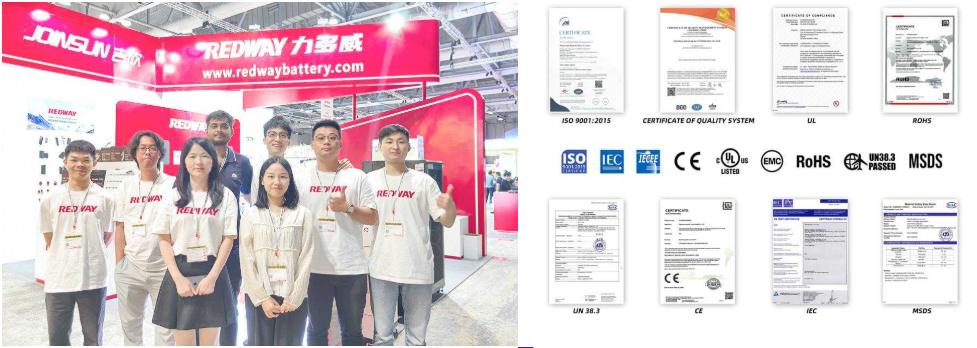Replacing the battery in an APC Smart-UPS 750 rack mount involves safely disconnecting the UPS, removing the old battery module, installing a compatible replacement, and testing the system. Always follow manufacturer guidelines and prioritize safety to avoid electrical hazards. Regular battery replacements every 3-5 years ensure uninterrupted power supply during outages.
48V 100Ah Rack-mounted Lithium Battery OEM
What Are the Signs Your Smart-UPS 750 Battery Needs Replacement?
Common signs include frequent beeping alarms, reduced runtime during outages, visible battery swelling, or the UPS failing a self-test. The device’s management software may also display warnings like “Replace Battery” alerts. Proactively monitoring battery health prevents unexpected failures.
Wholesale lithium golf cart batteries with 10-year life? Check here.
High Voltage Energy Storage Battery Rack-mounted System
How to Safely Remove the Old Battery Module?
Power off the UPS, disconnect all connected devices, and unplug the unit. Slide the battery tray out using the handle, then disconnect the terminal cables (negative first, positive second). Wear insulated gloves and avoid contact with corroded components. Dispose of old batteries according to local regulations.
Want OEM lithium forklift batteries at wholesale prices? Check here.
51.2V 50Ah Rack-mounted Wholesale Lithium Battery
When handling terminals showing corrosion, apply a baking soda-water solution (1 tablespoon per cup) to neutralize acid residue. Use a brass brush for cleaning contacts, never steel – which can create dangerous sparks. For swollen batteries, place them in a fireproof container during removal. Data centers should maintain a battery removal log tracking serial numbers and disposal certificates for audit compliance.
Which Replacement Batteries Are Compatible with the Smart-UPS 750?
APC RBC55 (12V 9Ah) is the OEM-recommended battery. Third-party alternatives like CSB HR1234WF2 or Generac GPVRB12360 are also compatible. Ensure replacements match the voltage (12V) and capacity (9Ah). Using non-OEM batteries may void warranties but can reduce costs by 30-40%.
51.2V 100Ah Rack-mounted Lithium LiFePO4 Battery Factory
| Battery Model | Type | Cycle Life | Price Range |
|---|---|---|---|
| APC RBC55 | VRLA Lead-Acid | 300-500 cycles | $90-$120 |
| CSB HR1234WF2 | AGM | 400-600 cycles | $60-$85 |
When using third-party batteries, verify UL certification and terminal alignment. Higher-priced models often include built-in charge indicators and thicker plates for extended lifespan. For mission-critical applications, consider battery packs with 20% overcapacity to compensate for aging.
What Tools Are Required for the Replacement Process?
Essential tools include a Phillips screwdriver, insulated gloves, multimeter for voltage checks, and anti-static wrist straps. Optional items: battery terminal cleaner, dielectric grease for corrosion prevention, and a battery recycling container. Workspace preparation includes a flat, dry surface and adequate lighting.
Rack Mounted Lithium Batteries Factory from China
How to Install and Configure the New Battery?
Insert the new battery module, connecting positive terminals first, then negative. Securely fasten the tray and power on the UPS. Run a self-test via the control panel or PowerChute software. Calibrate the battery by allowing a full discharge/recharge cycle. Update firmware if available for optimized performance.
“Using OEM batteries ensures optimal runtime and protects connected equipment,” says a Redway Power Solutions engineer. “Third-party cells can work, but verify UL certification. Always document replacement dates and cycle counts—proactive maintenance cuts downtime by 70% in our client case studies.”
FAQs
- How Often Should I Replace My Smart-UPS 750 Battery?
- Replace every 3-5 years, or when runtime drops below 50% of original capacity. Environmental factors like high temperatures accelerate degradation.
- Can I Use Lithium-Ion Batteries as Replacements?
- No—the Smart-UPS 750 is designed for VRLA lead-acid batteries. Lithium-ion conversions require hardware modifications not recommended by APC.
- Does Replacing the Battery Reset the UPS Configuration?
- No, settings remain intact. However, always back up configurations via PowerChute software before maintenance.





